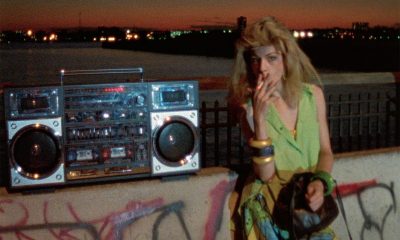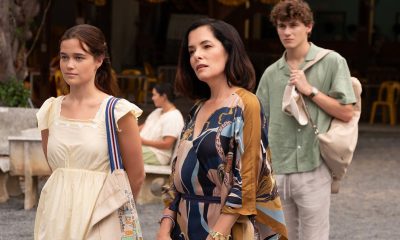a&e features
SPRING ARTS 2020: TV’s big paradigm shift and the queer consumer
Apple, Disney, others lock horns wth Netflix as streaming wars intensify — where will all the LGBTQ content land?
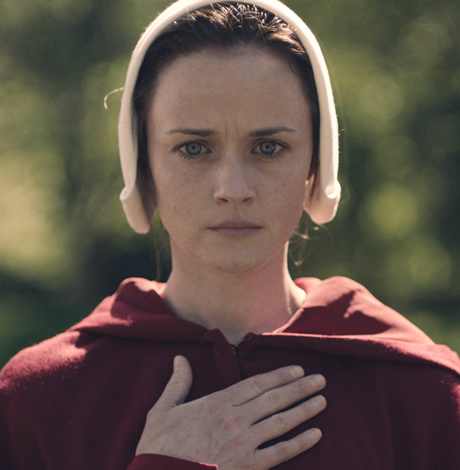
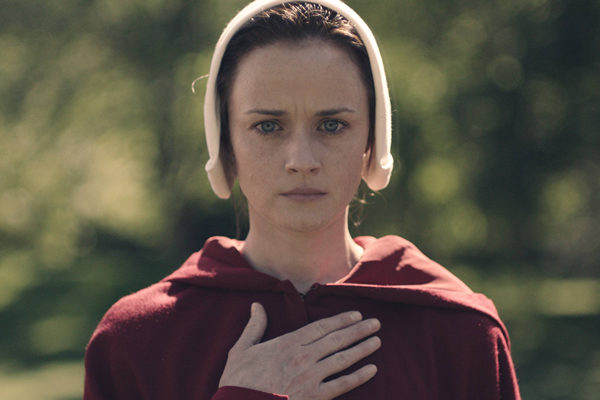
Streaming content — whether we’re talking about music or movies/TV — is, of course, nothing new. But on the movie/TV side, it’s ramping up to unprecedented levels.
The New York Times compares it to the great entertainment industry disruptions of yore — silent films going to “talkies” in the ’20s, TV in the ’50s and the double whammy of cable TV and VCRs in the ’80s, which radically shifted the way consumers viewed content.
Netflix started streaming movies and shows in 2007 and dominates the field with 166 million subscribers worldwide and a $12 billion budget for new content. Until now, the main old school media conglomerates — Disney, NBCUniversal and WarnerMedia — stayed out of it while Netflix (“Stranger Things,” “The Crown”), Amazon Prime Video (“The Marvelous Mrs. Maisel,” “Fleabag”) and Hulu (“The Handmaid’s Tale,” “Veronica Mars”) battled it out.
The old companies now realize they’ll have to adapt to survive. Disney Plus launched Nov. 12 for $6.99 a month offering content from Disney, Pixar, the “Star Wars” franchise, Marvel movies, reruns of “The Simpsons” and about 7,500 episodes of old Disney shows. WarnerMedia will launch HBO Max for $14.99 per month in May with 10,000 hours of available content such as “Friends,” “South Park, old Warner Bros. movies, CNN documentaries, “Sesame Street” and more. And Peacock, NBCUniversal’s imprint, will boast 15,000 hours of available content including reruns of “The Office,” “Frasier,” “Saturday Night Live,” Universal movies, a reboot of “Battlestar Galactica” and gobs more. It’s slated for an April 15 rollout.
Others are taking the can’t-beat-‘em-join-‘em approach. FX on Hulu launched March 2 boasting its shows such as “Mrs. America,” “Better Things,” “Dave” and “Fargo” now available there. And Quibi, set to launch April 6, is focusing on short-form mobile video. Founder Jeffrey Katzenberg is said to have spent more than $1 billion for short-form episodes of shows like a Steven Spielberg horror series “Spielberg’s After Dark” and “Kill the Efrons,” a survival reality series starring Zac Efron and his brother.
Apple, of course, is no longer content to sit on the sidelines either. Apple TV Plus launched Nov. 1. That makes the likely big players Netflix, Amazon Prime Video, Hulu, Disney Plus, Apple TV Plus, HBO Max and Peacock, but that’s just for starters.
There are, according to the New York Times citing data from Parks Associates, 271 online video services in the U.S. some of the more obscure ones offering highly curated content. For every mainstream one, such as ESPN Plus or NFL Sunday Ticket for sports, there’s a bounty of niche options like Crunchyroll and Hidive for anime, Hi-Yah! for martial arts or GAIA for yoga-themed content.
Navigating the deluge
So much is now available, though, that consumers are overwhelmed. Although it’s changed some in recent years, one of the long-running complaints of cable TV or Dish satellite subscribers was having to pay for hundreds of channels they never watched. Well, now with streaming, the argument goes, they no longer have to. Just subscribe to the services you want.
But it’s not that simple. Say you subscribe to Netflix and Hulu but then everybody starts buzzing about “The Marvelous Mrs. Maisel” winning a bunch of Emmys and being must-see TV and you’re faced with major pop culture FOMO. And if you have cut your cable subscription, as 5.5 million did in 2019 alone, what do you do when there’s a major event like the Olympics, the Academy Awards or the Super Bowl that none of the streaming services have the rights to? (The presidential debates, for example, are easy to stream for free online.) And what if you have one of those deals where your phone, home internet and cable are all under one umbrella like Xfinity in the D.C. market and it’s not as easy to get out of?
At some point, viewers will have to make a choice, much as they did between VHS or Beta 30 in the ’80s, and not all the companies getting into the game will be successful as consumers are only willing to pay so much — $44 the Wall Street Journal reports citing its own polling — for about 3.6 streaming services (one in five plan to cut the cable cord within the year, the Journal reports).
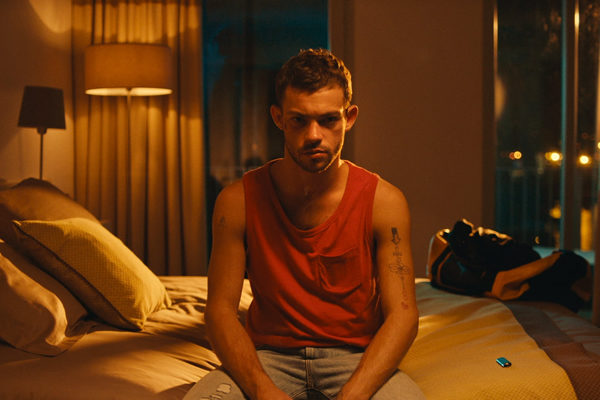
Gay entertainment writer/guru Greg Hernandez says it’s “a new frontier” for pop culture fans.
“There’s so much more content, the sky’s the limit,” he says. “And that’s why this seems unprecedented. It feels like the biggest beneficiaries are the consumers. They have so many choices now. They’re being courted with really quality content from all the top stars, the best actors are going for roles on shows that are being streamed, so I think the consumer is the biggest beneficiary. It’s nice to be courted and nice to have so much of the top talent flocking to this form.”
Cutting the cable cord?
For Matt Chun, a gay Washington man who early in his career worked at ABC, the current system is both a blessing and a curse.
“Digital and social media trends have changed just about everything in terms of the way we consume our content,” he says. “In some ways, we are more than ever in the driver’s seat with TV executives and music artists catering to our short attention spans, our schedules and our price points. In other ways, we’re spoiled brats imprisoned by our voracious appetites. And if not us, certainly the next generation of iPad-trained kids.”
Chun canceled cable about three years ago because it was simply cheaper to pay for streaming. He had Xfinity internet and cable and got tired of the hikes — it started at $75, jumped to $116, then $139 and he said, “Enough.” Similarly, his parents’ Xfinity bill in Philadelphia hiked from $150-187.
He now subscribes to AT&T TV, which comes with HBO GO, and Amazon Prime. The latter two are $63.60 per month (higher because they offer more of a hybrid experience with live TV and On Demand). Amazon Prime is $13 per month. He used to have Netflix but not currently.
And yes, he says there are times there’s something he wants to watch on another service.
“Often you’ll hear buzz about a show on social media but then realize it’s on the one you just cancelled,” he says. “For example right now, I’m curious about ‘The Circle’ on Netflix. There was a time that I would switch my services on and off, chasing the premiere of shows such as ‘Game of Thrones’ on HBO or the return of ‘Love’ on Netflix. But now there are just so many good shows that I just end up choosing one that I’m interested in on one of the services I have.”
There are ways around the dilemma, too.
“If there’s a show I really want to watch and don’t have paid access to, I can often find a streaming site — likely illegal — to binge watch it. Sometimes the quality suffers or the streaming lags, but it’s good enough. Or I’ll binge watch in spurts when I’m at my friend’s house who has different streaming options. It seems like I’m never without options … and someone is always entering the market with lower costs.”
“People share passwords with friends,” Hernandez says. “There are ways to see what you want to see.”
Kenya Hutton, another gay Washington TV fan, subscribes to Netflix, Hulu and Amazon Prime in addition to his $165 monthly Xfinity bill, which he plans to keep. He says despite all that, there’s still a dearth of representation.
“It would be great to see more quality LGBTQ programming from people of color,” Hutton says.
Where are all the queer shows?
There’s voluminous queer content on the major platforms. Four years ago, GLAAD started gathering data on streaming original series for its annual “Where We Are on TV” survey and the numbers have mostly gone up every year since then.
For the most recent survey, released last November, GLAAD found 109 regular LGBT characters on original scripted series on Amazon, Hulu and Netflix, the three platforms it monitors. That was an increase of 34 from last year’s tally. There are also 44 recurring LGBT characters, up from just seven the previous year.
Gay male characters make up 42 percent, lesbians 30 percent, 14 percent bi women and nine percent bi men. The one dip was in trans characters at seven percent, down four percentage points from the previous year. That’s likely a hiccup, GLAAD’s Megan Townsend, lead author of the report, says as shows such as “Transparent” and “Orange is the New Black” have ended and some shows she knows of in development with trans characters haven’t yet launched.
“I think maybe that was just a one-off year,” Townsend, who’s bi, says. “The bigger problem will be if this becomes a trend.”
The 109 LGBTQ characters on the streaming platforms compares to 90 on scripted shows on broadcast TV networks (ABC, CBS, NBC, FOX and The CW) and 121 on scripted primetime cable shows. So while it’s not as if there’s a deluge of LGBTQ characters and storylines on the streaming shows, it’s right up there in the same league as the network and cable shows. Some might even argue it’s a tad underwhelming when you consider streaming has unlimited volume potential whereas network and cable have limited daytime/prime time hours to program.
Of Amazon, Hulu and Netflix, Netflix had the most LGBTQ characters as has been the case every year streaming has been included in the GLAAD survey. So if queer representation on original streaming shows is your main interest, Netflix, home to “Grace and Frankie,” “Tales of the City” and the new RuPaul series “AJ and the Queen,” not to mention reality juggernaut “Queer Eye” (not counted in the GLAAD report) is your best bet.
So how did Netflix end up being the industry leader and also the best at LGBTQ representation? Brian Wright, Netflix’s vice president of original series: young adults/family, says the GLAAD report and other industry report cards are important, but the representation just happened on its own.
“I’m happy to report that it all truly comes out of an organic process,” Wright, who’s gay, says. “It’s about finding incredible storytellers and letting them do their best work. There’s no additional layer of, ‘Well, can you make this person this or that person that?’ We don’t have to do that because it’s already there in the storytelling, in the fabric of these shows. I would say that this great result we’re seeing with GLAAD is just a result of us attracting incredible talent to reflect the world back to the world.”
Wright has been with Netflix for six years and says there’s strong queer representation among its employees. Comparable, he says, to what he experienced at previous jobs with Viacom, Disney and Lifetime — “I’ve bounced around the Hollywood gauntlet,” he says. He oversees shows such as “Stranger Things,” “13 Reasons Why,” “Fuller House,” “The Umbrella Academy,” “Chilling Adventures of Sabrina” and the Ryan Murphy Netflix shows, the latest of which, “Hollywood,” launches in May.
He says the industry gatekeepers at Netflix — those with the power to greenlight a pitch — are more unencumbered than their counterparts in network.
“We don’t have a lot of handcuffs,” he says. “We’re not handcuffed by advertising considerations, we’re not handcuffed by a conservative standards and practices group. … We hear pitches all day long and we go toward the ones that are the most pure in vision and where we feel like, ‘Wow, this person has a story to tell and they totally understand what it is in their bones.’ It’s just not uncommon that there’s a gay person or people that are central to the story.”
There are, however, even gayer (albeit smaller) options.
Dekkoo, which started in late 2015, offers movies and TV — both original and non — geared toward gay men for $9.99 per month.
“When we launched, we had no delusions of grandeur or trying to beat Netflix or even pretending we could play in that field,” says Brian Sokel, Dekkoo president who, ironically, is straight having started the platform with his gay business partner Derek Curl. “But what we realized is that we could fill a void that was missing in the marketplace and probably do it very well and operate as a complementary service that’s all-inclusive for one type of audience.”
He says the big platforms are analogous to Blockbuster Video 20 years ago.
“I remember going there years ago and being bummed out because the selection was one geared to the largest, most homogenous audience possible,” he says. “You wouldn’t find any really deep selections of any genre, you really were just scratching the surface. That’s what made On Demand and Netflix, back when it was DVD by mail, so great was that suddenly you found this individual, independent content and all this incredible stuff you didn’t even know existed.”
Don’t go to Dekkoo looking for major titles like “Moonlight” or “Love, Simon.” Dekkoo, which is about 10 percent original content, Sokel says, is for the “queer independent fare that is really driving the queer cinema universe.”
“You can find gay stuff on all the main platforms,” he says. “It just depends on the user and what they’re looking for. The casual viewer could go on Amazon or Netflix and say, ‘Oh great, there’s a gay movie to watch.’ But for the person who’s really passionate about queer cinema where that’s not gonna cut it for them, that’s why we exist.”
Sokel declined to share how many subscribers Dekkoo has.
WOW Presents Plus (World of Wonder) is $3.99 per month after a seven-day free trial and offers “all things drag” with “UNHhhh,” “Werq the World” and “RuPaul’s Drag Race Season 12” (also on VH1).
WOW Presents Plus media department did not respond to multiple requests for comment this week from the Blade.
Looking ahead
So where’s it all headed? Is network dying a long, slow death? How does Netflix plan to stave off the competition?
Wright says the beauty of the new paradigm — Netflix is seven years into its original content creation — is the chance for non-U.S. content to take off and have a global impact. He cites “Money Heist” (“La casa de papel”), a crime drama/thriller from Spain (part four with eight new episodes drops April 3), as a strong example.
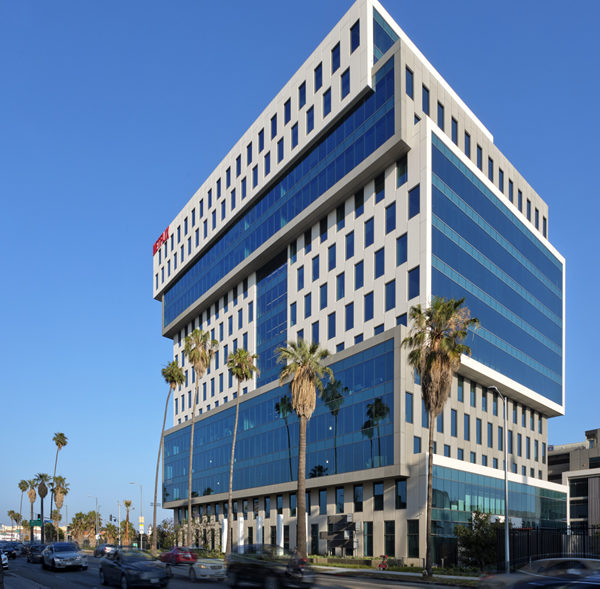
“It’s become massive,” he says. “I don’t believe in a pre-Netflix world that would have connected with millions of joyful fans all over the world. I think that’s a trend that we’re gonna see continue.”
He says his company always knew competitors would emerge in time. As for how long streaming and broadcast can co-exist, he says it’s “anyone’s guess.”
“I think that streaming is absolutely from a behavioral and technological perspective, it’s so good for the consumer and consumer control is something that’s more and more gonna be considered as the stakes keep moving forward. There are gonna be a lot of different choices out there and we just want to be the that people continue to feel is a must have.”
Chun enjoys all the options and still binge-watches certain shows, but says as a consumer, he has no strong opinions about streaming usurping traditional TV.
“I’m a bit numb and agnostic to it all,” he says. “Mergers are happening and Emmys are being won and I’m just like, ‘Alright, maybe I’ll check you out but I’m already bored thinking about the effort it would take and all my funds are tied up with multiple ‘cheap’ subscriptions. Oh yeah, and we haven’t even talked about porn yet.”
Netflix’s dark side?
Huge industry behemoths often have well-documented dark sides from Walmart’s predatory pricing, Facebook’s shady information sharing, Amazon’s anti-competitive/monopolistic behavior and Google’s recent wave of firing employees — a few of whom are transgender — who dared to call the company out on what they considered unethical practices, as the New York Times reported last month.
So surely Netflix has a dark side too, right?
Brian Wright, Netflix’s VP of original series, insists not.
“I’ve worked in so many places in Hollywood and this is by far the most collaborative group of people I have ever come across,” he says. “It’s a place where that kind of palace intrigue and backstabbing is not tolerated and honestly is called out. … It’s absolutely a high-performance culture here, but we like to avoid the brilliant jerks. One of our key tenets is selflessness.”
a&e features
Doug Spearman takes his chance
‘Noah’s Arc: The Movie’ debuted on Paramount+ last month
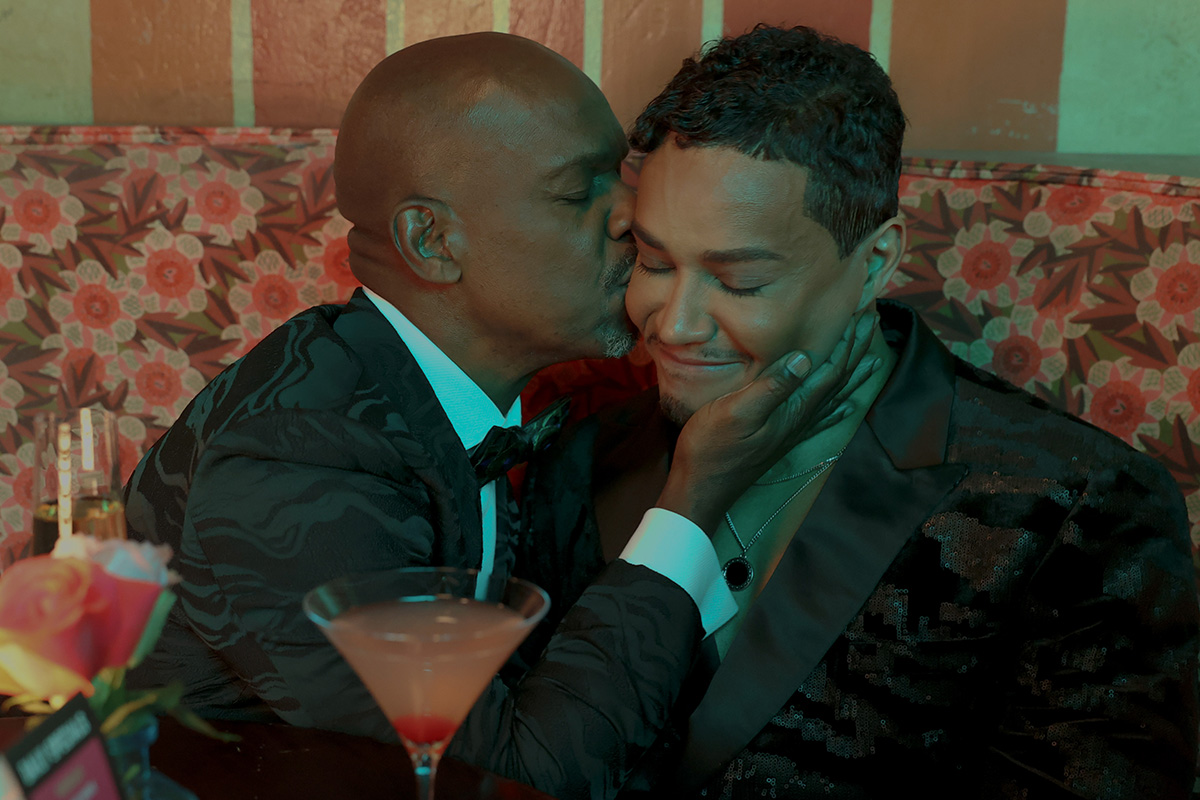
There’s no question that when Patrik-Ian Polk’s series “Noah’s Arc” premiered on Logo 20 years ago, it was a groundbreaking creation. The story of a group of Black gay men and their wonderful friendship. The titular arc was that of the cute main character, Noah (Darryl Stephens), and his close-knit circle of friends, including Chance played by gay actor Doug Spearman. This compelling and loving fraternity may, in fact, be what brought viewers back repeatedly, including a 2008 movie, “Noah’s Arc: Jumping the Broom,” as well as the 2020 “Noah’s Arc” short, and now, a new full-length feature “Noah’s Arc: The Movie,” debuting on Paramount+ on June 20. In the movie, filled with equal measures of laughs and tears, Chance, who has faced a devastating loss, finds his dependable friends there, ready to support and comfort him at a moment’s notice. I had the pleasure of speaking with Spearman the morning of the streaming premiere of “Noah’s Arc: The Movie.”
WASHINGTON BLADE: Doug, since the early 2000s, when the “Noah’s Arc” series premiered on Logo, you have been playing the character of Chance, including in the latest installment, “Noah’s Arc: The Movie.” What was it about Chance that appealed to you as an actor?
SPEARMAN: When Patrik (-Ian Polk) called me to ask me to play him (Chance), I was at JFK airport in the baggage claim, waiting for a suitcase. He explained what the part was. The thing that stuck out to me was the fact that Chance was in a long-term relationship with another Black man. And, they had a child; they had a 4-year-old daughter named Kenya. I had never seen two Black gay men raise a child on TV before. I thought it was the most revolutionary thing I’d ever seen. I immediately thought I’ve got to do this because that was something nobody had seen. I thought it was incredibly important to take the part.
BLADE: “Noah’s Arc: The Movie” was, once again, written and directed by Patrik-Ian Polk, who you just mentioned, is the creator of the entire franchise. What’s the secret to your long-standing working relationship?
SPEARMAN: [Laughs] the whole team, all of us, are like a band of brothers. We fight like brothers, we come together like brothers, we hash things out, we talk, because we’re all very different from our characters. I think the challenge of playing these guys and then uplifting these men, playing a part, especially something written by Patrik, is like solving a math equation. There’s always a challenge that’s enjoyable for me as an actor: to try to find out what it is that Patrik wants, and then how do I do it.
BLADE: I think you do a very good job of it.
SPEARMAN: Thank you very much
BLADE: In the years between “Jumping the Broom” and the new full-length movie, many changes have occurred, and the story addresses some of them, including gay widowhood, which is something that the aging community is now confronting, as well as mental health issues. Please say a few words about how you approached those subjects in the new movie.
SPEARMAN: I had a lot of loss in my life, right before we started shooting. Two months before we started shooting the first series, my mother died. I was going through the grief process through that whole first season. Since then, I’ve lost a lot of people in my life. In fact, when we started shooting the second season, the second week we were shooting, my ex died of a heart attack. I was having to fold that into what I was doing with my life on the set and off the set. You’ve got to show up and you’ve got to do your work. The first two seasons of “Noah’s Arc” are always tinged with the memory of grief. So, when I had to deal with the death that Chance faces (in the new movie), which is a significant death in his life, it wasn’t that hard to reach back, especially the scene in the graveyard. It was something that I unfortunately could pull from personal experience.
BLADE: Shifting gears, the movie features delightful cast surprises, including Jasmine Guy and TS Madison. Did you have a chance to interact with either or both when they were on set?
SPEARMAN: No, I didn’t have any scenes with Jasmine, and I missed her. I wish I had gotten to see her because I actually got to direct Jasmine for a CBS promo shoot for “Queen,” back in the early ‘90s. I had a huge crush on her when she was on “A Different World.” So, I really would have liked to reconnect. But TS and I got to see each other every day because I was in all her scenes. It was extraordinary being around somebody like that. That is one outspoken woman!
BLADE: Even though Beyoncé never makes an appearance in the movie, there’s a lot of talk about her. Would you say you are a Beyoncé fan?
SPEARMAN: Yes! I’m breathing! Yes, I’m a Beyoncé fan. I actually got the chance to meet her. I knew her mom. Her mom was extraordinary to me. She is in the second movie I directed. She also gave us a wedding gown to use in the very first scene of the movie. That family is extraordinarily important to me. Not only just to be a fan, but to be somebody who’s gotten to know them and work with them and see how hard they work. I don’t think anybody works as hard as Tina or Beyoncé.
BLADE: There was a recent news item about gay actor Benito Skinner of the Amazon Prime series “Overcompensating” being told not to bother auditioning for straight roles. As an out actor yourself, how important do you think it is for queer characters to be portrayed by queer actors, and vice versa?
SPEARMAN: Being queer is a multifaceted identity. There’s no one kind of queer person. I think finding the best actor that’s your first circle of casting. I think one of the joys about being an actor is that you get to play different parts. I play straight guys all the time. Dads and husbands and things like that. I think a lot of people are told not to do it. In fact, I wouldn’t be Chance if the actor who was originally cast as Chance hadn’t been pulled out of the series by his agents because they didn’t want him to play a gay character.
BLADE: That’s amazing! Thank you for sharing that. Without giving away too much, the ending of the movie is a little ambiguous, even ending with a question mark. If there was a “Noah’s Arc: The Movie” sequel, would you come back for that?
SPEARMAN: Yeah! A lot of it would depend on what Chance’s journey is going to be like. Patrik and I have conversations like that all the time. He’s very interested and supportive of input. I hope I would be, as we all would be, part of the creative growth with these characters. They live in Patrik’s head, and he writes them, but we’re the ones who have to flesh them out. It’s a conversation, it’s always a conversation.
BLADE: You are currently performing in Molière’s “The Imaginary Invalid” as part of the New Orleans Shakespeare Festival at Tulane. What has this experience been like for you?
SPEARMAN: It’s extraordinary! I started on stage when I was seven. There’s nothing like working with a live audience and having that immediacy. I’m working with an extraordinarily talented cast in a really great play, and I have some of the best scene partners I could ever want.
BLADE: Are there any upcoming film or TV projects you’d like to mention?
SPEARMAN: I’m still a writer, and I’m still a director, and I’ve still got scripts that I would like to make. I have a little something that’s a cross between “Treme” and “Bridgerton” that I want to do. I’m always trying to figure out what the next thing is.
a&e features
Visit Cambridge, a ‘beautiful secret’ on Maryland’s Eastern Shore
New organization promotes town’s welcoming vibe, LGBTQ inclusion
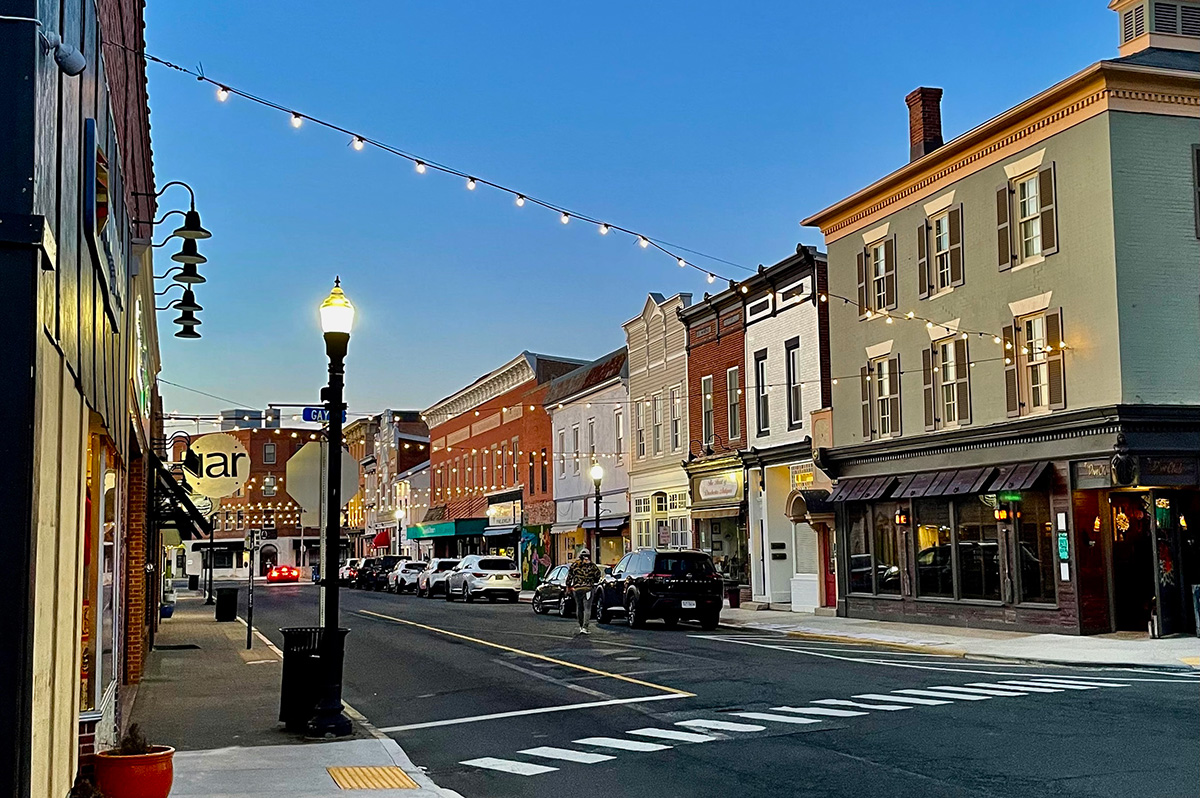
CAMBRIDGE, Md. — Driving through this scenic, historic town on Maryland’s Eastern Shore, you’ll be charmed by streets lined with unique shops, restaurants, and beautifully restored Victorian homes. You’ll also be struck by the number of LGBTQ Pride flags flying throughout the town.
The flags are a reassuring signal that everyone is welcome here, despite the town’s location in ruby red Dorchester County, which voted for Donald Trump over Kamala Harris by a lopsided margin. But don’t let that deter you from visiting. A new organization, Proudly Cambridge, is holding its debut Pride event this weekend, touting the town’s welcoming, inclusive culture.
“We stumbled on a beautiful secret and we wanted to help get the word out,” said James Lumalcuri of the effort to create Proudly Cambridge.
The organization celebrates diversity, enhances public spaces, and seeks to uplift all that Cambridge has to share, according to its mission statement, under the tagline “You Belong Here.”
The group has so far held informal movie nights and a picnic and garden party; the launch party is June 28 at the Cambridge Yacht Club, which will feature a Pride celebration and tea dance. The event’s 75 tickets sold out quickly and proceeds benefit DoCo Pride.
“Tickets went faster than we imagined and we’re bummed we can’t welcome everyone who wanted to come,” Lumalcuri said, adding that organizers plan to make “Cheers on the Choptank” an annual event with added capacity next year.
One of the group’s first projects was to distribute free Pride flags to anyone who requested one and the result is a visually striking display of a large number of flags flying all over town. Up next: Proudly Cambridge plans to roll out a program offering affirming businesses rainbow crab stickers to show their inclusiveness and LGBTQ support. The group also wants to engage with potential visitors and homebuyers.
“We want to spread the word outside of Cambridge — in D.C. and Baltimore — who don’t know about Cambridge,” Lumalcuri said. “We want them to come and know we are a safe haven. You can exist here and feel comfortable and supported by neighbors in a way that we didn’t anticipate when we moved here.”
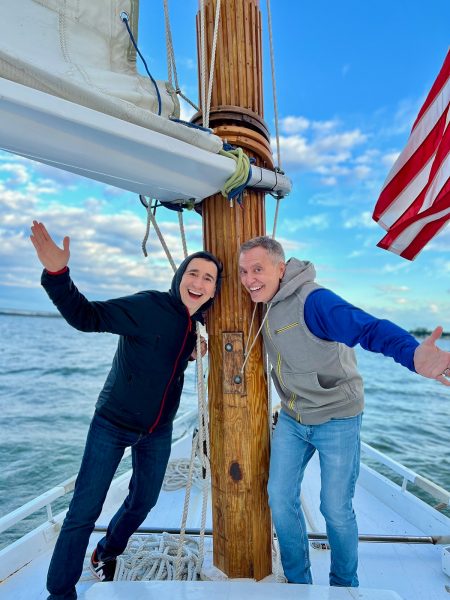
Lumalcuri, 53, a federal government employee, and his husband, Lou Cardenas, 62, a Realtor, purchased a Victorian house in Cambridge in 2021 and embarked on an extensive renovation. The couple also owns a home in Adams Morgan in D.C.
“We saw the opportunity here and wanted to share it with others,” Cardenas said. “There’s lots of housing inventory in the $300-400,000 range … we’re not here to gentrify people out of town because a lot of these homes are just empty and need to be fixed up and we’re happy to be a part of that.”
Lumalcuri was talking with friends one Sunday last year at the gazebo (affectionately known as the “gayzebo” by locals) at the Yacht Club and the idea for Proudly Cambridge was born. The founding board members are Lumalcuri, Corey van Vlymen, Brian Orjuela, Lauren Mross, and Caleb Holland. The group is currently working toward forming a 501(c)3.
“We need visibility and support for those who need it,” Mross said. “We started making lists of what we wanted to do and the five of us ran with it. We started meeting weekly and solidified what we wanted to do.”
Mross, 50, a brand strategist and web designer, moved to Cambridge from Atlanta with her wife three years ago. They knew they wanted to be near the water and farther north and began researching their options when they discovered Cambridge.
“I had not heard of Cambridge but the location seemed perfect,” she said. “I pointed on a map and said this is where we’re going to move.”
The couple packed up, bought a camper trailer and parked it in different campsites but kept coming back to Cambridge.
“I didn’t know how right it was until we moved here,” she said. “It’s the most welcoming place … there’s an energy vortex here – how did so many cool, progressive people end up in one place?”
Corey van Vlymen and his husband live in D.C. and were looking for a second home. They considered Lost River, W.Va., but decided they preferred to be on the water.
“We looked at a map on both sides of the bay and came to Cambridge on a Saturday and bought a house that day,” said van Vlymen, 39, a senior scientist at Booz Allen Hamilton. They’ve owned in Cambridge for two years.
They were drawn to Cambridge due to its location on the water, the affordable housing inventory, and its proximity to D.C.; it’s about an hour and 20 minutes away.
Now, through the work of Proudly Cambridge, they hope to highlight the town’s many attributes to residents and visitors alike.
“Something we all agree on is there’s a perception problem for Cambridge and a lack of awareness,” van Vlymen said. “If you tell someone you’re going to Cambridge, chances are they think, ‘England or Massachusetts?’”
He cited the affordability and the opportunity to save older, historic homes as a big draw for buyers.
“It’s all about celebrating all the things that make Cambridge great,” Mross added. “Our monthly social events are joyful and celebratory.” A recent game night drew about 70 people.
She noted that the goal is not to gentrify the town and push longtime residents out, but to uplift all the people who are already there while welcoming new visitors and future residents.
They also noted that Proudly Cambridge does not seek to supplant existing Pride-focused organizations. Dorchester County Pride organizes countywide Pride events and Delmarva Pride was held in nearby Easton two weeks ago.
“We celebrate all diversity but are gay powered and gay led,” Mross noted.
To learn more about Proudly Cambridge, visit the group on Facebook and Instagram.
What to see and do
Cambridge, located 13 miles up the Choptank River from the Chesapeake Bay, has a population of roughly 15,000. It was settled in 1684 and named for the English university town in 1686. It is home to the Harriet Tubman Museum, mural, and monument. Its proximity to the Blackwater National Wildlife Refuge makes it a popular stop for birders, drawn to more than 27,000 acres of marshland dubbed “the Everglades of the north.”
The refuge is walkable, bikeable, and driveable, making it an accessible attraction for all. There are kayaking and biking tours through Blackwater Adventures (blackwateradventuresmd.com).
Back in town, take a stroll along the water and through historic downtown and admire the architecture. Take in the striking Harriet Tubman mural (424 Race St.). Shop in the many local boutiques, and don’t miss the gay-owned Shorelife Home and Gifts (421 Race St.), filled with stylish coastal décor items.
Stop for breakfast or lunch at Black Water Bakery (429 Race St.), which offers a full compliment of coffee drinks along with a build-your-own mimosa bar and a full menu of creative cocktails.
The Cambridge Yacht Club (1 Mill St.) is always bustling but you need to be a member to get in. Snapper’s on the water is temporarily closed for renovations. RaR Brewing (rarbrewing.com) is popular for craft beers served in an 80-year-old former pool hall and bowling alley. The menu offers burgers, wings, and other bar fare.
For dinner or wine, don’t miss the fantastic Vintage 414 (414 Race St.), which offers lunch, dinner, wine tasting events, specialty foods, and a large selection of wines. The homemade cheddar crackers, inventive flatbreads, and creative desserts (citrus olive oil cake, carrot cake trifle) were a hit on a recent visit.
Also nearby is Ava’s (305 High St.), a regional chain offering outstanding Italian dishes, pizzas, and more.
For something off the beaten path, visit Emily’s Produce (22143 Church Creek Rd.) for its nursery, produce, and prepared meals.
“Ten minutes into the sticks there’s a place called Emily’s Produce, where you can pay $5 and walk through a field and pick sunflowers, blueberries, you can feed the goats … and they have great food,” van Vlymen said.
As for accommodations, there’s the Hyatt Regency Chesapeake Bay (100 Heron Blvd. at Route 50), a resort complex with golf course, spa, and marina. Otherwise, check out Airbnb and VRBO for short-term rentals closer to downtown.
Its proximity to D.C. and Baltimore makes Cambridge an ideal weekend getaway. The large LGBTQ population is welcoming and they are happy to talk up their town and show you around.
“There’s a closeness among the neighbors that I wasn’t feeling in D.C.,” Lumalcuri said. “We look after each other.”
a&e features
James Baldwin bio shows how much of his life is revealed in his work
‘A Love Story’ is first major book on acclaimed author’s life in 30 years

‘Baldwin: A Love Story’
By Nicholas Boggs
c.2025, FSG
$35/704 pages
“Baldwin: A Love Story” is a sympathetic biography, the first major one in 30 years, of acclaimed Black gay writer James Baldwin. Drawing on Baldwin’s fiction, essays, and letters, Nicolas Boggs, a white writer who rediscovered and co-edited a new edition of a long-lost Baldwin book, explores Baldwin’s life and work through focusing on his lovers, mentors, and inspirations.
The book begins with a quick look at Baldwin’s childhood in Harlem, and his difficult relationship with his religious, angry stepfather. Baldwin’s experience with Orilla Miller, a white teacher who encouraged the boy’s writing and took him to plays and movies, even against his father’s wishes, helped shape his life and tempered his feelings toward white people. When Baldwin later joined a church and became a child preacher, though, he felt conflicted between academic success and religious demands, even denouncing Miller at one point. In a fascinating late essay, Baldwin also described his teenage sexual relationship with a mobster, who showed him off in public.
Baldwin’s romantic life was complicated, as he preferred men who were not outwardly gay. Indeed, many would marry women and have children while also involved with Baldwin. Still, they would often remain friends and enabled Baldwin’s work. Lucien Happersberger, who met Baldwin while both were living in Paris, sent him to a Swiss village, where he wrote his first novel, “Go Tell It on the Mountain,” as well as an essay, “Stranger in the Village,” about the oddness of being the first Black person many villagers had ever seen. Baldwin met Turkish actor Engin Cezzar in New York at the Actors’ Studio; Baldwin later spent time in Istanbul with Cezzar and his wife, finishing “Another Country” and directing a controversial play about Turkish prisoners that depicted sexuality and gender.
Baldwin collaborated with French artist Yoran Cazac on a children’s book, which later vanished. Boggs writes of his excitement about coming across this book while a student at Yale and how he later interviewed Cazac and his wife while also republishing the book. Baldwin also had many tumultuous sexual relationships with young men whom he tried to mentor and shape, most of which led to drama and despair.
The book carefully examines Baldwin’s development as a writer. “Go Tell It on the Mountain” draws heavily on his early life, giving subtle signs of the main character John’s sexuality, while “Giovanni’s Room” bravely and openly shows a homosexual relationship, highly controversial at the time. “If Beale Street Could Talk” features a woman as its main character and narrator, the first time Baldwin wrote fully through a woman’s perspective. His essays feel deeply personal, even if they do not reveal everything; Lucian is the unnamed visiting friend in one who the police briefly detained along with Baldwin. He found New York too distracting to write, spending his time there with friends and family or on business. He was close friends with modernist painter Beauford Delaney, also gay, who helped Baldwin see that a Black man could thrive as an artist. Delaney would later move to France, staying near Baldwin’s home.
An epilogue has Boggs writing about encountering Baldwin’s work as one of the few white students in a majority-Black school. It helpfully reminds us that Baldwin connects to all who feel different, no matter their race, sexuality, gender, or class. A well-written, easy-flowing biography, with many excerpts from Baldwin’s writing, it shows how much of his life is revealed in his work. Let’s hope it encourages reading the work, either again or for the first time.
-

 U.S. Supreme Court3 days ago
U.S. Supreme Court3 days agoSupreme Court to consider bans on trans athletes in school sports
-

 Out & About3 days ago
Out & About3 days agoCelebrate the Fourth of July the gay way!
-

 Virginia3 days ago
Virginia3 days agoVa. court allows conversion therapy despite law banning it
-

 Maryland5 days ago
Maryland5 days agoLGBTQ suicide prevention hotline option is going away. Here’s where else to go in Md.

